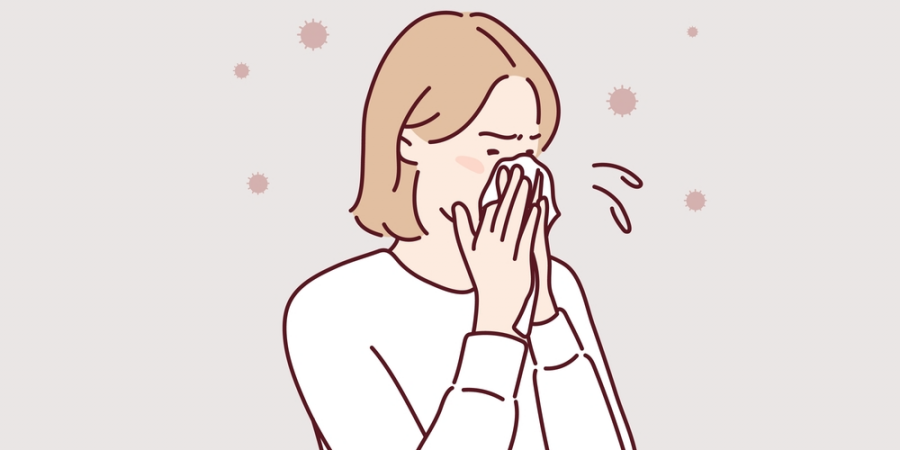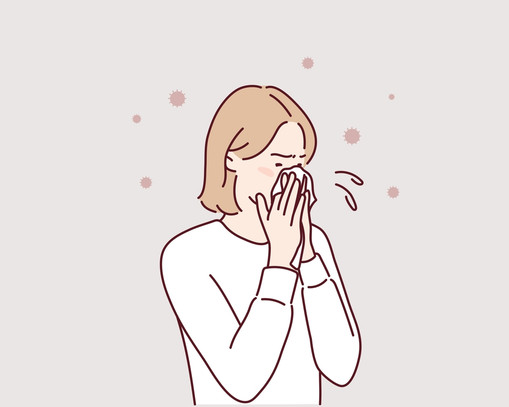

Are you one of the millions who love to stay fit but find that your allergies often throw a wrench in your workout plans ?
You’re not alone. Whether it’s seasonal allergies flaring up during spring or exercise - induced asthma slowing you down. Staying active with allergies can be challenging – but definitely doable.
In this article we’ll explore practical tips for exercising with allergies, how to avoid common triggers and ways to enjoy your favorite activities without constantly sneezing, wheezing or feeling drained.

Physical Activity is essential for overall health, from boosting mood to strengthening the heart and lungs. But for people with allergies or allergic asthma, working out can sometimes feel like a struggle.
With the right strategies, you can stay active with allergies safely and comfortably.
Before going with the solution, let’s understand the problem.
1. Allergic Rhinitis (Hay Fever) :- It can cause congestion, runny nose and itchy eyes making breathing difficult during cardio workouts.
2. Allergic asthma may trigger coughing, wheezing or tightness in the chest during or after the exercise.
3. These issues don't mean you should stop exercising – they just mean you need to approach fitness a little differently.
1. Check the Pollen Count before exercising outdoors If you have seasonal allergies, timing matters. Check local pollen forecasts online or through allergy apps before heading out.
Best time to go outside : Early morning or Late evening when pollen counts are lower.
Things to Avoid :
>Midday outdoor workouts.
> Dry windy days
> Areas with freshly cut grass.
2. Opt for Indoor Workouts during peak allergy seasons Whenever pollen levels are high, bring your workout inside.
> like yoga classes
Make sure your indoor environment is clean and well organized to avoid dust mites and mold exposure.
3. Warm up slowly to prevent asthma Flare ups A proper warm up helps reduce the risk of exercise induced asthma symptoms
4. Use Medications as Directed
Talk to your allergist or doctor about the best allergy medications or inhalers to use before exercising.
- Common options include :
> Antihistamines
> Nasal Corticosteroids Sprays
>Bronchodilators ( for asthma )
Take them as prescribed - not just when symptoms appear – for better prevention.
5. Wear a Mask on High Pollution or Cold Days
Masks can help filter out pollen, pollutants and cold air – especially if you run or bike outdoors.
Choose:
> A lightweight, breathable mask.
> One that covers both the nose and mouth.
In winter, a scarf over the face can also help warm the air before it reaches your lungs.
6. Showcase and Change Clothing after Workout
Pollen and other allergens can cling to your skin, hair and clothes.
Post-workout routine :
> Shower Immediately
> Wash sweaty clothes promptly
> Keep bedroom windows closed to avoid bringing allergens indoors.
This helps prevent night time allergy flare ups.
7. Stay Hydrated
Drinking water thins mucus keeps nasal passages moist – reducing irritation and congestion.
8. Choose Low Allergen Environments
Some sports and environments are naturally friendlier to allergy sufferers.
> swimming
> Gym based workouts
> Air conditioned yoga studios
Things to Avoid.
> Outdoor running in high pollen areas.
> Cycling near busy roads with high pollution.
> Hiking through tall grasses.
9. Keep an Emergency Plan Ready
If you have severe allergies or asthma, always carry your emergency medication.
10. Work with an Allergist for Long Term Relief.
If allergies regularly interfere with your ability to stay active, consider seeing an allergist. They can offer personalized treatment plans.
Shop Now: https://arogyamshop.com/collections/best-selling/products/arogyam-shwas-prash-nasya-ghee
